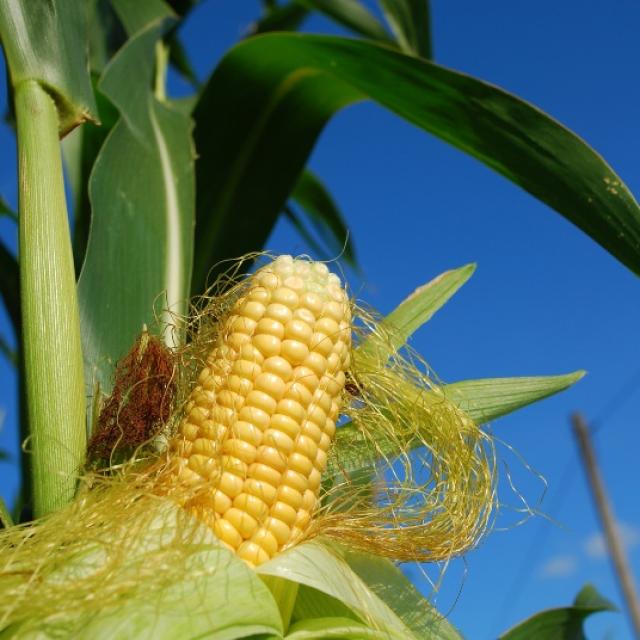The story began in the USA with the development of the direct drilling and zero tillage techniques. For 15 years Netafim USA has been offering American corn growers subsurface drip systems for irrigating their maize (corn) crops. More than 5,000 ha are installed annually in the United States. The technique has now begun to cross the Atlantic and Netafim France, a subsidiary of the Netafim group, is attempting to adapt this technical solution to the French conditions.

A rapid installation site
The technique involves laying a number of drip lines at the same time, using a tubing plough or trencher, to a depth of 30 to 40 cm (photo 2 and 2b). The drip tubes are buried and will last at least 20 years. The rest of the installation process is similar to that of any other subsurface drip irrigation system (photo 1).
The filtration system, air vent and drain valve, as well as a flushout manifold, will be designed according to the flow rates and working pressure of the system (photo 2). In 80% of cases, the drip lines are spaced at 1.3 m., with distances between the emitters of 0.6 m and flow rates of 1 l/h. In this way, whatever the layout, all the maize (corn) plants will receive a good supply of water.
The farmer begins, first of all, by burying the drip lines and then creating his primary and secondary network. The installation time varies according to the soil type. It is possible to cover 4 to 6 ha/day. The longest and most complicated stage is the connecting-up of all the driplines to the laterals and headers (photo 3).
This technique has many advantages.
First and foremost, it has the advantage of being easier to use. With the automation of the system, the farmer spends much less time installing, adjusting and monitoring the system. Then there is the environmental advantage. The reductions in water use can range from 15 to 30% compared with sprinklers (photo 4).
It all depends on the soil type and soil moisture dynamics. In the peri-urban outskirts of the towns and cities, using drip irrigation on fields in close proximity to built-up areas avoids causing nuisance to the local residents. However, the biggest advantage lies in the increased revenue per hectare, directly linked to the improved yields obtained from the field. The farmer thus combines the conservation of water with economic performance. Representing an alternative option for both the supporters and opponents of irrigation, subsurface drip irrigation can allow French farmers to continue to grow crops that have a high water consumption, but which are often strategically important, and yet still meet the demands of those who want to see a reduction in water withdrawals for irrigation.
A potentially important market
With 1,500,000 ha of maize grown in France, and 10% of this area being direct drilled, the potential market for this new application is considerable. However, maize or corn is not the only crop that can be managed with a drip irrigation system. All cereals and oilseed crops can be irrigated by this method. The only difference would be the spacing between the rows, which would be adapted to the different cropping densities used.
The price compares favourably with that of sprinkler irrigation.
Compared with the sprinkler system, the price/ha is more or less the same, or even less, particularly when the irrigated area is less than 25 ha. The reason for this is that the surface area and the general shape and layout of the field are deciding factors in the economic viability of such an installation.
A major advantage: Fertigation
This is the strong point of such a system. As the emitters are positioned within the crop’s rooting zone, the applications of fertilisers achieve maximum effect.
By dividing up the applications and applying them when the plant has the greatest need, the farmer now has a management tool that enables him to control crop growth. Furthermore, by using less units/ha, the farmer saves on inputs.
Conclusion
The technique is working and more and more farmers are becoming convinced. Apart from the problems connected with the soil or its tillage, there are very few disadvantages. The tubes are not biodegradable and can, therefore, be easily extracted after 20 years of use. Once they have been collected up, they will be recycled. Today, the only barrier to this form of irrigation is that the general public are unaware of the existence of such a technique.
